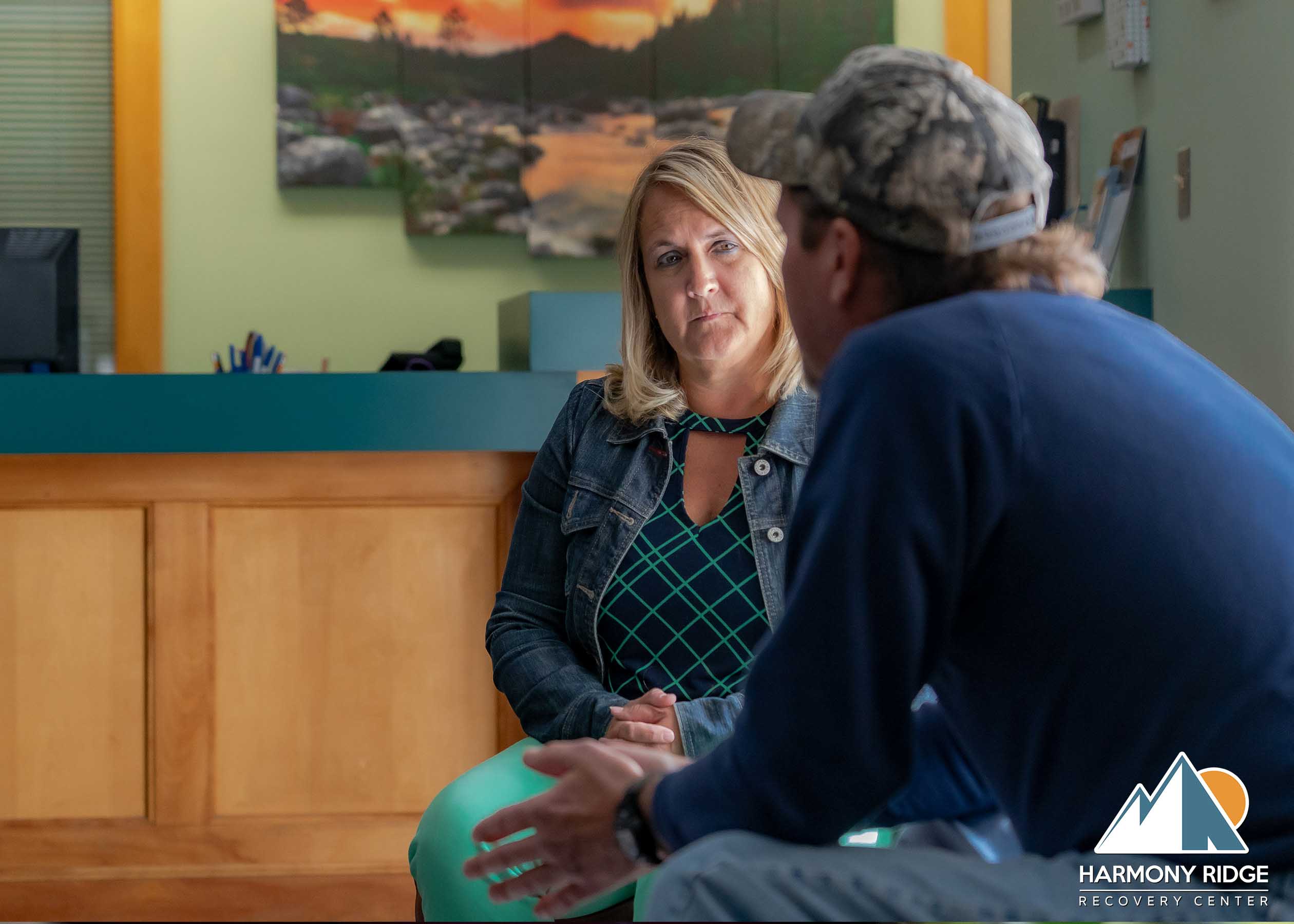Barboursville, West Virginia: Drug and Alcohol Addiction Resources
For addiction resources and top-notch addiction treatment services in Barboursville, WV, contact Harmony Ridge Recovery Center. Our comprehensive programs provide all you need for sustained recovery and a brighter future.
Barboursville, West Virginia, is a charming village nestled in Cabell County. This vibrant and diverse community, despite its serene beauty, faces the nationwide challenge of substance abuse and addiction, reflecting a concern that knows no boundaries between rural and urban locales. Recognizing the importance of seeking help for addiction is crucial. It is a complex disease, often shrouded in feelings of shame and isolation. However, it’s essential to know that treatment is available and recovery is achievable. With this comprehensive guide, Harmony Ridge Recovery Center aims to provide an in-depth understanding of the substance abuse situation in Barboursville. It covers the resources available for treatment, the types of rehabilitation programs, and what to consider when choosing a treatment center.
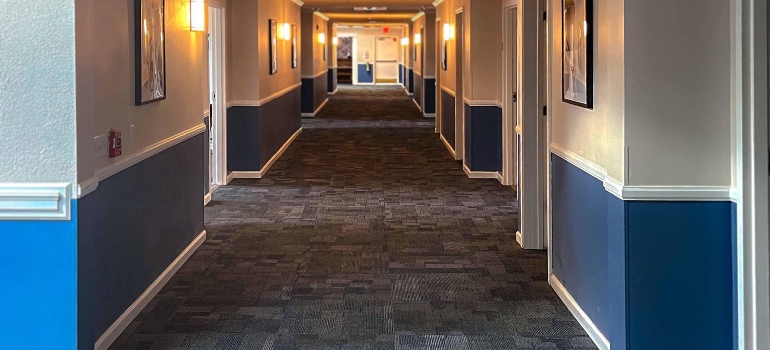
How Substance Abuse Impacts Local Communities in Barboursville
Substance abuse impacts more than just the individuals grappling with addiction. Its effects ripple outward, straining relationships, causing financial difficulties, increasing crime rates, destabilizing the community, and leading to family breakdown. Besides a wide range of social issues, drug misuse can contribute to health issues such as overdoses, mental health disorders, and communicable diseases. In West Virginia alone, the drug overdose death rate was 81.4 per 100,000 people in 2020, one of the highest in the country.
However, Barboursville has not remained passive in the face of this crisis. There are local initiatives in place that recognize and actively address the addiction problem. These initiatives range from educational programs to public health campaigns and efforts by local government to increase access to treatment services.
State-Level Statistics on Substance Abuse in West Virginia
These state-level statistics offer a general idea of the problem in the region. West Virginia has a significant issue with substance misuse, as shown by several statistics:
- 14.88% of adults reported using illicit drugs in the last month.
- 17.18% of adults reported using marijuana in the last month.
- 1.91% of adults reported using cocaine in the last month.
- 0.42% of adults reported using heroin in the last 30 days.
- 1.34% of adults reported using methamphetamine in the last 30 days.
- 3.88% of adults reported opioid misuse in the last month, and 3.46% reported an opioid use disorder.
- 10.09% of adults reported a drug use disorder in the last 30 days.
- 31.92% of adults reported using tobacco in the last 30 days, with 24% of adults using cigarettes.
For the population under 18, the rates are lower:
- 7.18% reported illicit drug use in the last month.
- 9.81% reported marijuana use in the last month.
- 0.25% reported using cocaine in the last 30 days.
- 0.03% reported methamphetamine use in the last 30 days.
- 2.02% reported opioid misuse in the last 30 days, and 0.73% reported an opioid use disorder.
- 4.63% reported using tobacco in the last 30 days, with 3.1% using cigarettes.
Local Initiatives Addressing the Addiction Crisis in West Virginia
Some local initiatives addressing the addiction crisis include:
- The Cabell-Huntington Harm Reduction Program—It provides a needle exchange program and education on overdose prevention and response, including the provision of naloxone kits. Naloxone is a medication that can quickly reverse the effects of an opioid overdose.
- Recovery Point West Virginia—It operates a long-term residential recovery program for men and women in Huntington, which is near Barboursville. This program is peer-led and offers services like life skills training, 12-step meetings, and job placement assistance.
- Help4WV—It offers a 24/7 call, chat, and text line that provides immediate help for any West Virginian struggling with an addiction or mental health issue. Call (844) 435 7498
- The Quick Response Team (QRT) initiative—It is a collaboration between first responders, healthcare providers, and addiction recovery specialists who reach out to people within 72 hours of an overdose to provide resources and support.
- Help & Hope WV—It is a state-led initiative aimed at addressing the opioid crisis in West Virginia. It offers resources for those struggling with addiction, as well as their families and communities, to help them navigate the crisis. The website offers a variety of resources, including information on understanding addiction, prevention strategies, treatment options, and recovery resources. It also has a feature where individuals can locate treatment centers nearby and obtain help for overdose emergencies.
- West Virginia Office of Drug Control Policy (ODCP)—It is a branch of the West Virginia Department of Health and Human Resources. It focuses on improving prevention, early intervention, treatment, and recovery services. The ODCP aims to reduce the prevalence of substance use disorder and its adverse impacts on public safety, the workforce, and overall health and well-being. As of December 31, 2022, some of their accomplishments included increasing the number of treatment beds from 197 to 1,341, providing more than 91,416 naloxone kits, establishing 14 Family Treatment Courts, 46 Adult Treatment Courts, and 25 Juvenile Treatment Courts, and implementing substance use disorder response programs in 23 emergency departments, among other initiatives
Commonly Abused Substances in Barboursville
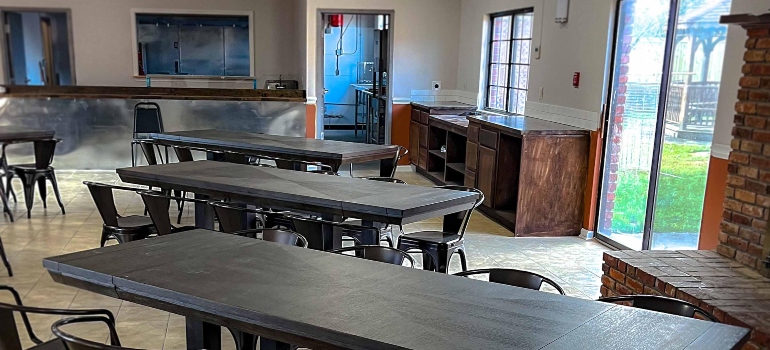
Several substances have been identified as commonly abused in Barboursville. These include, but are not limited to:
- Alcohol
- Prescription drugs
- Illicit substances such as opioids
Each of these substances poses specific dangers and effects to individuals and the community at large. Understanding the unique risks associated with each substance is an essential step in both prevention and treatment efforts.
Dangers of Substance Abuse
In West Virginia, as in many other places, there are several commonly abused substances that pose significant dangers and have detrimental effects on individuals and communities. Here are some of the substances and their associated risks:
- Opioids: Opioid abuse, including prescription painkillers and illicit opioids like heroin and fentanyl, has had a devastating impact in West Virginia. The dangers of opioid abuse include addiction, overdose, and death. Opioids depress the central nervous system, leading to respiratory depression, sedation, and a high risk of overdose.
- Methamphetamine: Methamphetamine abuse has been a growing concern in West Virginia. This stimulant drug can lead to addiction, physical and mental health problems, increased aggression, and risky behavior. Methamphetamine use can have severe consequences on physical and mental health, including cardiovascular issues, psychosis, and cognitive impairment.
- Alcohol: Excessive alcohol consumption poses numerous risks to individuals and society. Alcohol abuse contributes to impaired judgment, motor vehicle accidents, violence, domestic abuse, and various health issues, including liver disease and alcohol addiction.
- Marijuana: While marijuana is now legal for medical use in West Virginia and decriminalized for recreational use in some states, it is important to note that marijuana abuse can still have negative effects. Excessive marijuana use can impair cognitive function, affect memory and learning, and increase the risk of mental health problems, particularly in vulnerable individuals.
- Prescription Drugs: Abuse of prescription drugs, particularly opioid and benzodiazepine abuse, remains a significant concern. Illicit use of prescription medications can lead to addiction, overdose, and various health complications. Inappropriate use of these drugs can also contribute to the diversion of medications from legitimate medical purposes.
- Synthetic Drugs: West Virginia has seen the emergence of synthetic substances, such as synthetic cannabinoids (often referred to as spice or K2) and synthetic cathinones (bath salts). These substances can have unpredictable effects on the brain and body, leading to severe health complications, addiction, and even death.

It is crucial to recognize that the dangers and effects of substance abuse can vary depending on individual factors, including the frequency and amount of use, method of administration, and co-occurring mental health conditions. Seeking help from healthcare professionals, addiction treatment programs, and support groups is essential for individuals struggling with substance abuse in West Virginia.
Factors Contributing to the Addiction Crisis in Barboursville, West Virginia
West Virginia has been significantly affected by the addiction crisis, particularly involving opioids. Several factors have contributed to the severity of the crisis in Barboursville and the entire state. Here are some key factors:
- Economic Challenges: West Virginia has faced economic hardships, including a decline in job opportunities and industries such as coal mining. High unemployment rates and poverty can contribute to a sense of hopelessness and lead individuals to seek solace in substance use.
- Overprescription of Opioids: West Virginia has historically had high rates of opioid prescriptions, leading to a surplus of prescription painkillers in circulation. Overprescribing practices by healthcare professionals contributed to the availability and accessibility of opioids, increasing the likelihood of addiction.
- Limited Access to Healthcare: Many areas of West Virginia face challenges in accessing quality healthcare, including addiction treatment services. Approximately 1.4% of West Virginia’s population lacks a primary healthcare facility within a 30-minute driving distance, while 2.9% of the total population relies solely on a single facility, making them vulnerable to limited access in the event of its closure. Lack of healthcare infrastructure and insurance coverage can limit individuals’ ability to seek proper treatment and support for addiction.
- Physical Pain and Injuries: West Virginia has a high incidence of physical labor-intensive jobs, such as coal mining, which can lead to a higher prevalence of work-related injuries and chronic pain. This, in turn, can contribute to the use and misuse of pain medications.
- Cultural Factors: Cultural norms and attitudes towards substance use can influence addiction rates. In some communities, there may be social acceptance or normalization of substance use, making it more challenging for individuals to seek help or break free from addiction.
- Historical Factors: West Virginia has a long history of substance abuse issues, including alcohol and prescription drug misuse. This historical context, along with a lack of comprehensive addiction prevention and treatment initiatives, has contributed to the current crisis.
- Geographic Isolation: West Virginia’s rural nature and geographic isolation make it difficult for individuals in remote areas to access addiction treatment services. Limited transportation options and the distance to treatment facilities can be significant barriers to recovery.
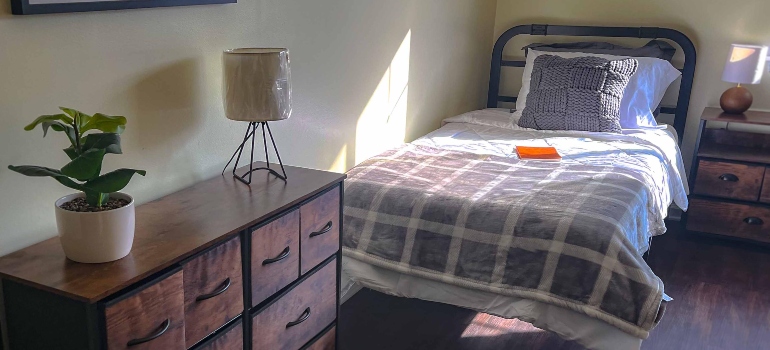
It’s important to note that these factors interact and influence each other, exacerbating the addiction crisis in Barboursville and the whole of West Virginia. Addressing the crisis requires a comprehensive approach that includes prevention efforts, increased access to addiction treatment services, community education, and policy changes aimed at reducing the availability and overuse of opioids.
What Treatment Resources Are Available in West Virginia?
Turning to the broader scope of West Virginia, numerous addiction treatment resources are available throughout the state. Government-funded treatment programs and initiatives have been put in place to provide access to recovery services for those who might not otherwise be able to afford them. In addition to these, non-profit organizations and community-based resources play a vital role in offering support, awareness, and treatment options to those struggling with substance abuse and their families.
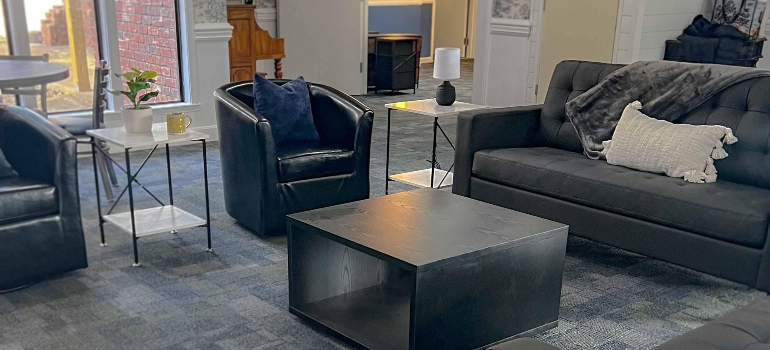
Government-Funded Addiction Treatment Programs in WV
The state government, along with federal funding sources, supports initiatives to address substance abuse and provide treatment services. Some of the government-funded addiction treatment programs in West Virginia include:
- West Virginia Department of Health and Human Resources (DHHR): The DHHR offers various programs and services to address substance abuse, including the Bureau for Behavioral Health. This bureau provides oversight, funding, and support for addiction treatment programs throughout the state.
- Medicaid: West Virginia’s Medicaid program provides coverage for substance abuse treatment services, including detoxification, outpatient treatment, residential treatment, and medication-assisted treatment (MAT) for opioid addiction.
- Substance Abuse and Mental Health Services Administration (SAMHSA) Grants: West Virginia receives federal grants from SAMHSA to support substance abuse prevention, treatment, and recovery initiatives. These grants fund programs aimed at expanding access to treatment services, enhancing recovery support services, and implementing evidence-based practices.
- West Virginia Substance Use Disorder Loan Repayment Program: This program, funded by the West Virginia Legislature, aims to increase access to addiction treatment by providing loan repayment assistance to healthcare professionals who work in designated substance use disorder treatment facilities.
- Community-Based Initiatives: West Virginia supports community-based initiatives and partnerships that focus on substance abuse prevention and treatment. These initiatives often receive government funding to provide services such as counseling, support groups, and outreach programs.
Non-Profit Organizations and Community-Based Resources
There are several non-profit organizations and community-based resources in West Virginia that provide addiction treatment and support services. These organizations often work in collaboration with government agencies and other community partners to address substance abuse issues. Here are some examples:
- Appalachian Teen Challenge: Appalachian Teen Challenge is a non-profit organization that focuses on helping teenagers and young adults overcome substance abuse and other life-controlling issues. They offer a residential discipleship program with a holistic approach to recovery.
- West Virginia Council of Churches: The West Virginia Council of Churches is a faith-based organization that collaborates with local communities to address addiction and promote recovery. They offer resources, support groups, and education on substance abuse and recovery from a faith-based perspective.
Rehabilitation Options in Barboursville, WV
Harmony Ridge, with its facilities in Barboursville, WV, offers a range of rehab options that cater to the various needs and circumstances of individuals grappling with addiction. These include:
- Medical detox
- Intensive outpatient programs (IOP)
- Partial Hospitalization Programs (PHP)
- Residential treatment programs
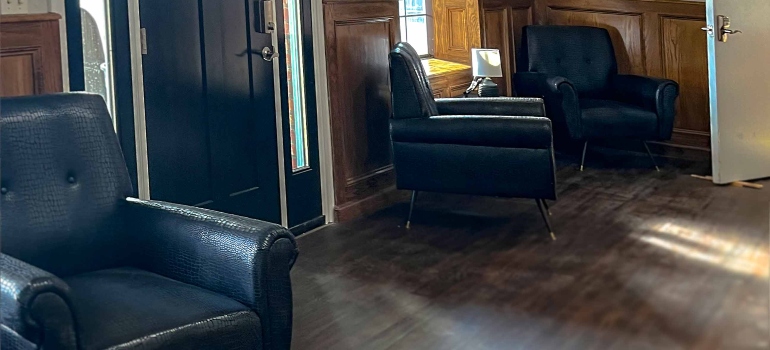
Our residential treatment center in Barboursville offers a place for you to focus entirely on your recovery, away from the triggers and stresses of your usual environment. We provide a supportive and structured environment where you can work on your recovery with professional help.
Medical Detox in Barboursville WV
Medical detoxification, often referred to as “medical detox,” is the process of removing harmful substances from a person’s body under medical supervision. This process is commonly used to help individuals withdraw safely from drugs or alcohol. Medical detox is usually the first step in a comprehensive rehabilitation program for substance use disorders.
Here is what it involves:
- Assessment: Before the detox process begins, the individual undergoes a thorough medical assessment. This includes a physical exam, a review of medical history, and sometimes lab tests. The goal is to understand the person’s physical health, the substance they have been using, the duration and intensity of their use, and any co-occurring mental or physical health conditions. This information is used to create a personalized detox plan.
- Stabilization: The main goal of detox is to stabilize the individual physically and mentally. This often involves a medical intervention to manage the symptoms of withdrawal. Depending on the substance used, withdrawal symptoms can range from mildly uncomfortable to life-threatening. They may include anxiety, agitation, sweating, nausea, vomiting, seizures, and hallucinations. Medications are often used to ease these symptoms and make the detox process as comfortable as possible.
- Transition to Further Treatment: Once the detox process is complete, the individual is usually transitioned into further treatment. Detox alone is not sufficient to treat addiction—it only addresses the physical dependence on the substance, not the psychological aspects of addiction. Further treatment usually involves therapy (individual and group), education about addiction, skills training for coping with cravings and avoiding relapse, and sometimes medications to help maintain abstinence.
Medical detox should be conducted under the supervision of a healthcare professional. Trying to detox at home or without medical supervision can be dangerous due to the potential severity of withdrawal symptoms. Furthermore, medical detox offers the benefit of immediate medical intervention should complications arise.
It’s also important to remember that detox is just the first step in recovery. Ongoing treatment and support are critical for maintaining long-term sobriety and addressing the underlying issues that led to substance use in the first place.
Intensive Outpatient Program in Barboursville WV
Intensive Outpatient Programs (IOP) are a type of treatment service and support program used primarily to treat eating disorders, depression, self-harm, and chemical dependency that does not rely on detoxification. IOP operates on a small scale and can be conducted in a variety of settings, including mental health clinics, hospitals, private practices, and community health centers.
At Harmony Ridge, IOP programs are customized to each individual’s specific needs and schedule. They offer the intensity of inpatient treatment but with the flexibility to live at home and, in some cases, continue with work or school. The main goals are to provide patients with the support and education necessary to recover.
Here are some key characteristics of IOPs:
- Intensity and Schedule: IOPs typically meet at least three days a week for two to three hours at a time. However, the exact number of sessions can vary based on the individual’s needs. The high frequency of sessions allows for a concentrated focus on recovery.
- Group Therapy: IOPs usually include group therapy sessions. These sessions allow individuals to connect with others who are going through similar experiences, which can provide a sense of community and mutual support. Group sessions often involve skill-building exercises, therapeutic activities, and discussions.
- Individual Therapy: In addition to group work, IOPs may also include individual therapy sessions. This can help patients address personal issues and develop individual coping strategies.
- Family Involvement: IOPs often include a family component, recognizing the important role that family can play in recovery. This may involve family therapy sessions and/or education about the person’s condition and how to provide support.
- Holistic Approaches: At our WV rehab center, we offer additional services like mindfulness and relaxation training, art or music therapy, and other holistic approaches to support overall wellness.
- Aftercare Planning: IOPs include a focus on aftercare planning. This involves creating a plan for continued outpatient treatment and support once the intensive phase of treatment is over. The goal is to ensure that the individual has the resources and plan in place to maintain recovery in the long term.
It’s important to note that while IOPs can be a powerful form of treatment, they are not appropriate for everyone. Individuals with severe conditions or those who are at risk for serious withdrawal symptoms might require a higher level of care, such as inpatient treatment. As with any form of treatment, it’s important to discuss options with a healthcare provider to determine the best course of action.
Partial Hospitalization Programs in Barboursville WV
A Partial Hospitalization Program (PHP), also known as a day program, is a type of outpatient treatment program for mental health conditions and substance use disorders. It provides a high level of care, similar to what a patient might receive in a hospital, but allows the patient to return home at the end of the day.
PHPs typically operate five days a week for several hours each day, during which patients participate in a variety of therapeutic activities. These may include individual therapy, group therapy, educational sessions, and skill-building activities. Medication management may also be part of the program, with regular check-ins with a psychiatrist to monitor the effectiveness and side effects of any prescribed medications.
The goal of a PHP is to stabilize the patient’s condition and help them develop the skills necessary to manage their mental health or substance use disorder. These programs often serve as a step-down from more intensive inpatient care but can also be used as a step-up from less intensive outpatient care if needed.
Admission to a PHP is usually based on a mental health professional’s assessment that the patient requires more support than traditional outpatient care can provide but does not require 24-hour supervision. This might include individuals who are at risk of harming themselves or others or who are having difficulty functioning in their daily lives due to their mental health condition or substance use.
It’s important to note that while PHPs can provide significant support, they are not suitable for everyone. Some people may require round-the-clock care that can only be provided in an inpatient setting. Others may not require the intensity of a PHP and could benefit from standard outpatient care, which typically involves seeing a therapist or psychiatrist on a weekly or biweekly basis. As always, the best treatment plan will depend on the individual’s unique needs and circumstances.
Residential Treatment Programs in Barboursville, West Virginia
Residential treatment programs, also known as inpatient rehab, provide comprehensive, 24-hour care for individuals struggling with addiction. These programs typically involve a stay at a specialized facility for a period of time, which can range from a few weeks to several months, depending on the specific program and the individual’s needs.
There are several key components to residential treatment programs for addiction:
- Detoxification (Detox): Many residential programs begin with a detox phase, where the body is allowed to rid itself of the addictive substance under medical supervision. This can help manage and alleviate withdrawal symptoms, which can be severe and potentially dangerous in some cases.
- Therapy and Counseling: A crucial part of residential treatment is individual and group therapy. This can include various types of therapy, such as cognitive-behavioral therapy (CBT), motivational interviewing (MI), and family therapy. The goal is to address the underlying issues that led to the addiction, develop coping strategies, and build skills for managing stress and avoiding relapse.
- Medication-Assisted Treatment (MAT): Some residential programs, such as ours, use medications to help manage withdrawal symptoms, reduce cravings, and treat any co-occurring mental health conditions. This approach is often used for addictions to opioids, alcohol, and tobacco.
- Education and Skills Training: Many programs include educational sessions about addiction and recovery, as well as training in life skills and strategies for maintaining sobriety in the real world. This might involve learning about the effects of drugs and alcohol on the brain, stress management techniques, relationship skills, and relapse prevention strategies.
Residential treatment programs can be very effective for individuals with severe addictions, especially those who have tried other forms of treatment without success or those who lack a stable, supportive environment at home. However, they are also more intensive and more expensive than outpatient treatment options, so the decision to enter a residential program should be made carefully in consultation with a healthcare provider or addiction specialist.
Diverse Therapeutic Approaches for Addiction in Barboursville WV
In the quest to overcome mental health challenges and addiction, various therapeutic approaches have been developed and refined. These methods offer a variety of perspectives and techniques to help individuals understand their behaviors, thoughts, and emotions and learn effective strategies for change. We will explore some of these key therapeutic approaches, including:
- Behavioral Therapies
- Motivational Interviewing
- Holistic therapy
- Treatment methods for co-occurring disorders
Each of these therapies offers unique benefits and can be tailored to meet the specific needs of individuals as they journey toward recovery and improved mental health.
Behavioral Therapies for Substance Abuse
Behavioral therapies are a category of psychotherapeutic treatments that aim to identify and help change potentially self-destructive or unhealthy behaviors. They function on the idea that all behaviors are learned and that unhealthy behaviors can be changed. This approach often focuses on current problems and practical strategies for change. Among the types of behavioral therapies, two of the most commonly used are:
- Cognitive Behavioral Therapy (CBT)
- Dialectical Behavior Therapy (DBT)
- Rational Emotive Behavior Therapy (REBT)
Cognitive Behavioral Therapy (CBT)
Cognitive Behavioral Therapy is a common type of talk therapy (psychotherapy) that helps patients become aware of inaccurate or negative thinking so they can view challenging situations more clearly and respond to them in a more effective way. It is based on the cognitive model: the way individuals perceive a situation is more closely connected to their reaction than the situation itself.
CBT typically involves efforts to change thought patterns. These strategies might include:
- Learning to recognize one’s distortions in thinking that are creating problems and then reevaluate them in the light of reality
- Gaining a better understanding of the behavior and motivation of others
- Using problem-solving skills to cope with difficult situations
- Learning to develop a greater sense of confidence in one’s own abilities
Dialectical Behavior Therapy (DBT)
Dialectical Behavior Therapy is a type of cognitive behavioral therapy that emphasizes the psychosocial aspects of treatment. The theory behind the approach is that some people react more intensely toward certain emotional situations, primarily those found in romantic, family, and friend relationships.
DBT theory suggests that some people’s arousal levels in certain situations can increase far more quickly than the average person’s. This leads to intense bouts of anger, despair, and anxiety. DBT is a therapy designed to help people understand and manage these feelings.
DBT combines standard cognitive-behavioral techniques for emotion regulation and reality testing with concepts of mindful awareness, distress tolerance, and acceptance. Key components of DBT include:
- Skills training: DBT emphasizes learning and applying skills in varying contexts. These skills include mindfulness, interpersonal effectiveness, distress tolerance, and emotion regulation.
- Individual psychotherapy: This is focused on improving motivation and helping individuals apply skills in their daily lives.
- Telephone coaching: Therapists are often available for “coaching” over the phone to help navigate difficult situations in real-time.
- Therapist consultation team: The therapists themselves have regular meetings to discuss their cases and receive support from their peers.
Both CBT and DBT have been found effective for a variety of mental health issues, including anxiety disorders, depression, and post-traumatic stress disorder, among others. The choice between the two often depends on the specific needs and circumstances of the individual seeking therapy.
Rational Emotive Behavior Therapy (REBT)
Rational Emotive Behavior Therapy (REBT) is a type of cognitive-behavioral therapy developed by psychologist Albert Ellis in the 1950s. REBT is based on the premise that people generally want to do well in life and to be happy. Still, their internal belief systems can sometimes lead to irrational thoughts and behaviors, causing emotional distress.
The goal of REBT is to help individuals identify their irrational beliefs, challenge them, and replace them with healthier, more rational thoughts. By doing so, it aims to promote emotional well-being and productive behaviors.
REBT is grounded in the idea that it is not the events themselves that upset us but the beliefs we hold that cause us to feel distressed. For example, if we believe that we must be perfect in everything we do, then we’re likely to feel anxious and stressed when we inevitably make a mistake.
Here are the key components of REBT:
- Identification of Irrational Beliefs: The first step in REBT is to help individuals identify their irrational beliefs, which might include absolute statements they make to themselves, such as “I must always succeed” or “I’m worthless if I make a mistake.”
- Challenging the Irrational Beliefs: Once these beliefs have been identified, the therapist helps the individual challenge and dispute them. This might involve looking at the evidence that supports or refutes the belief or considering the logical implications of holding such a belief.
- Replacing Irrational Beliefs with Rational Ones: Finally, the individual is encouraged to replace their irrational beliefs with more rational and realistic ones. This might involve recognizing that it’s okay to make mistakes or that one’s worth is not dependent on being perfect.
REBT can be used to treat a variety of mental health conditions, including anxiety disorders, depressive thoughts, eating disorders, and more. Like other forms of cognitive-behavioral therapy, REBT is typically a short-term, goal-oriented approach that focuses on the present and on practical strategies for changing thought patterns and behaviors.
Motivational Interviewing (MI)
Motivational Interviewing (MI) is a counseling method that helps people resolve ambivalent feelings and insecurities to find the internal motivation they need to change their behavior. It is a practical, empathetic, and short-term process that takes into consideration how difficult it is to make life changes.
Developed by clinical psychologists William R. Miller and Stephen Rollnick, MI is often used to address addiction, but it is also used to manage physical health conditions, such as diabetes, heart disease, and asthma. This approach supports strategies of making positive behavioral changes while acknowledging that all individuals experience a certain amount of ambivalence about change.
There are four key principles of MI:
- Express Empathy: The therapist communicates understanding and acceptance of the client’s experiences, which helps to create a supportive and non-judgmental counseling environment.
- Develop Discrepancy: The therapist helps the client see the difference between their current behavior and their broader life goals and values. This can create motivation for change.
- Roll with Resistance: Instead of confronting the client’s resistance to change directly, the therapist accepts and explores the client’s resistance, often reframing it as a sign of the client’s ongoing struggle with ambivalence.
- Support Self-Efficacy: The therapist encourages the client’s belief in their own ability to carry out and sustain change. This principle asserts that it is the client who should be seen as the primary agent of change.
Motivational interviewing utilizes open-ended questions, affirmations, reflective listening, and summaries to express empathy and highlight the client’s reasons for change. It is a non-confrontational and collaborative method that respects the client’s autonomy and capacity for self-directed change. MI is adaptable and compatible with other treatment approaches, making it a useful tool in various treatment settings.
Holistic Therapy for Addiction

Holistic therapy for addiction refers to non-medical recovery methods that complement traditional medical treatments. The goal of holistic therapy is to bring about healing by addressing the person’s physical, mental, and spiritual well-being. This approach acknowledges that addiction is not just about physical cravings but also involves emotional stress and unhealthy life patterns.
Holistic therapy for addiction might incorporate a wide range of treatment modalities, such as:
- Mindfulness and Meditation: These practices can help individuals become more aware of their bodies, thoughts, and emotions. This increased awareness can reduce stress and help individuals better understand and manage their cravings and emotional triggers.
- Nutrition and Exercise: A healthy diet and regular physical activity can improve mood, reduce stress, and help repair the physical damage caused by substance abuse. These lifestyle changes can also increase individuals’ overall sense of well-being, making them less likely to turn to drugs or alcohol for comfort.
- Yoga and Tai Chi: These practices combine physical movement, meditation, and controlled breathing. They can help individuals improve their physical health, reduce stress, and develop a greater sense of inner peace.
- Art and Music Therapy: Creating art or music can be therapeutic for people in recovery. It can provide a new way to express feelings and experiences, reduce stress, and increase self-esteem.
- Acupuncture and Massage: These therapies can help reduce stress, improve physical health, and promote relaxation. Some studies suggest that acupuncture can also help reduce cravings and alleviate withdrawal symptoms.
- Animal-Assisted Therapy: Interacting with animals can provide comfort, reduce feelings of anger or loneliness, and improve mood.
The exact mix of therapies used in a holistic treatment plan will depend on the individual’s needs, interests, and circumstances. It’s important to note that holistic therapies are usually used as a complement to, not a replacement for, traditional treatments such as medication and psychotherapy. The aim is to provide a comprehensive treatment plan that addresses all aspects of the individual’s health and well-being.
Treatment for Co-Occurring Disorders
Co-occurring disorders, also known as dual diagnosis, refer to the simultaneous presence of a mental health disorder and a substance use disorder. When these conditions occur together, they can often exacerbate each other, making treatment more complex. However, there are effective treatment methods specifically designed for co-occurring disorders.
The most effective approach to treating co-occurring disorders is integrated treatment. This approach involves coordinating substance abuse and mental health interventions rather than treating each disorder separately without consideration for the other.
Here are some key aspects of treatment for co-occurring disorders:
- Integrated Assessment: An accurate diagnosis is the first step in the treatment of co-occurring disorders. An integrated assessment considers both mental health and substance use disorders in order to determine an individual’s full range of needs.
- Integrated Treatment Planning: Once an integrated diagnosis has been made, a comprehensive treatment plan can be developed. This plan should address both the substance use disorder and the mental health disorder concurrently. It should include goals related to both disorders and consider how they interact with each other.
- Psychotherapy: Cognitive-behavioral therapy (CBT) is often used in the treatment of co-occurring disorders. Other forms of therapy, like dialectical behavior therapy (DBT) or trauma-focused therapies, may also be helpful depending on the specific disorders present.
- Medication-Assisted Treatment (MAT): In some cases, medications may be used to help manage mental health symptoms or to treat the substance use disorder
- Supportive Services: Many individuals with co-occurring disorders can benefit from supportive services like case management, housing assistance, vocational rehabilitation, or peer support. These services can help individuals navigate the treatment system, find stable housing, develop job skills, and build a supportive recovery community.
- Continuing Care: The recovery process for co-occurring disorders is often long-term and can involve multiple episodes of treatment. Continuing care approaches, such as ongoing therapy or support group participation, can provide long-term support and help prevent relapse.
The specific mix of treatments used will depend on the individual’s specific diagnoses, their personal preferences, and their overall health and social situation. It’s important to choose a treatment provider who has experience with co-occurring disorders and can provide or coordinate the range of services needed. At Harmony Ridge Recovery Center, we have years of experience treating dual diagnoses. It is our core belief that every patient deserves a unique approach, so we do everything in our power to develop a treatment plan that suits their specific needs.
Aftercare and Relapse Prevention Programs in Barboursville WV
Aftercare and relapse prevention are crucial elements of a comprehensive addiction treatment program. The recovery process doesn’t end when an individual completes a treatment program; in fact, the post-treatment period is a critical time when individuals are at a higher risk of relapse. This is why aftercare – the care received after the initial treatment phase – is so vital.
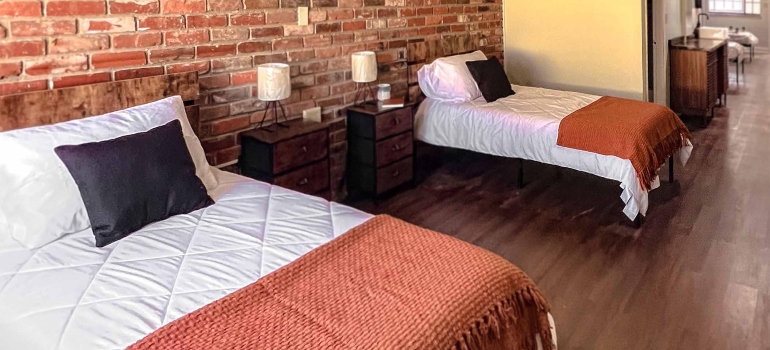
Importance of Aftercare
Aftercare programs provide ongoing support to individuals as they navigate life in recovery. These programs often include a mix of individual therapy, group counseling, self-help groups, and other support services. Aftercare can help individuals maintain the skills they learned in treatment, manage stress and triggers in a healthy way, and build a supportive community of peers in recovery.
The goal of aftercare is to maintain and enhance the gains made during initial treatment, helping individuals transition back into their daily lives while maintaining sobriety. Research has consistently shown that longer durations of treatment, including participation in aftercare programs, are associated with better outcomes.
Strategies and Programs for Relapse Prevention
Relapse prevention strategies are designed to help individuals recognize the signs of an impending relapse and take action to prevent it. They often involve a mix of lifestyle changes, therapy (such as cognitive behavioral therapy), and ongoing support. Here are a few key strategies and programs often used in relapse prevention:
- Self-Care: Regular exercise, a healthy diet, adequate sleep, and stress management techniques like meditation or yoga can all help individuals manage cravings and reduce the risk of relapse.
- Support Groups: Groups like Alcoholics Anonymous (AA) or Narcotics Anonymous (NA) can provide ongoing peer support and a sense of community. These groups often use a 12-step approach that includes steps for maintaining sobriety and preventing relapse.
- Continuing Therapy: Ongoing therapy can provide a space for individuals to discuss challenges, explore triggers, and continue developing coping skills.
On your journey to long-term sobriety, it is crucial to keep in mind that relapse is not a sign of failure but rather a signal that the treatment plan needs to be adjusted.
What to Look for in a Treatment Center
Navigating the complex world of health and treatment centers can be daunting, but understanding key criteria can guide your decision-making process. Some important considerations to keep in mind when choosing a treatment center are:
- Approach to treatment
- Treatment options offered
- Location
- Staff qualifications
- Financial considerations
Approach to Treatment
When choosing the right addiction treatment center in Barboursville WV, you should make sure it offers comprehensive and inclusive treatment.
Treatment centers differ significantly in their approach to treatment. Some may take a traditional approach, using methods such as therapy and medication, while others may offer more holistic services, including yoga, meditation, and nutrition counseling. You’ll want to choose a center that uses an approach you’re comfortable with, and that aligns with your personal beliefs and preferences.
Importantly, the center should also be inclusive and able to cater to a diverse range of patients with different backgrounds, cultures, and needs. This could mean having interpreters available, ensuring accessibility for those with physical disabilities, or providing culturally-sensitive care.
At our West Virginia addiction treatment center, we tailor our treatment approach to suit:
- Veterans who have experienced traumatic past
- Pregnant women struggling with addiction
- Young adults at risk
- Seniors with addiction issues
Treatment Plans Offered
Two key questions you need to ask before you decide on the addiction treatment facility in Barboursville WV are:
- Does the center offer personalized treatment plans that cater to your specific needs and conditions?
- Are they flexible in adjusting these plans based on your progress and feedback?
A good treatment center should recognize that everyone’s journey is unique and should be able to adapt their programs accordingly.
Importance of Location
Choosing a center that is geographically convenient for you or your loved ones is also crucial. It’s easier to maintain regular visits and treatments when the center is in a suitable location. However, if the best center for your needs is located further away, consider the quality of care over proximity.
Staff Qualifications and Credentials
The qualifications and experience of the staff should be a top priority. Ensure that the center employs certified and licensed professionals with adequate experience in their field. They should also exhibit good patient rapport, empathy, and communication skills.
Insurance Coverage and Payment Options
Understanding the financial implications is critical. Make sure to verify whether the center accepts your insurance coverage. If insurance does not cover the treatment, or if you do not have insurance, inquire about alternative payment plans or financial aid options. The center should be transparent about all costs involved, helping you to make an informed decision.
Why Should You Start Your Journey to Recovery with Harmony Ridge Recovery Center?
When embarking on the journey to recovery, the choice of a treatment center can significantly influence the outcome. Harmony Ridge Recovery Center is a standout option for numerous reasons, ranging from our specialized services to our experienced staff. Some key reasons why Harmony Ridge is the right choice for your recovery journey are:
- Comprehensive and Individualized Treatment Plans—At Harmony Ridge, we understand that each person’s journey to recovery is unique. Thus, our approach to treatment is highly personalized, tailored to meet each individual’s needs and conditions. This is achieved by conducting a thorough assessment of every patient upon arrival, allowing the staff to create a detailed, individualized treatment plan.
- Variety of Treatment Options—Harmony Ridge offers a wide range of treatment options, combining both traditional and innovative approaches. Our services include individual therapy, group therapy, family counseling, and various holistic treatment methods. This extensive range of services ensures that all aspects of an individual’s health – physical, mental, emotional, and spiritual – are addressed during the recovery process.
- Highly-Qualified and Compassionate Staff—We pride ourselves on our team of experienced, licensed professionals. Our staff includes medical doctors, psychologists, therapists, and nurses who are all dedicated to helping patients throughout their recovery journey. The staff at Harmony Ridge not only have the necessary qualifications and experience but also exhibit a high level of empathy and understanding, ensuring that patients feel supported and cared for at every step.
- Serene and Comfortable Environment—Located amidst scenic surroundings, Harmony Ridge offers a peaceful and nurturing environment that aids in the recovery process. The center provides comfortable accommodations, recreational facilities, and nutritious meals, creating a home-like atmosphere where patients can focus entirely on their recovery.
- Aftercare and Support—Understanding that recovery is a lifelong journey, we offer robust aftercare support. This includes ongoing therapy sessions, support group meetings, and resources to help patients maintain their sobriety and well-being post-treatment.
Choose Harmony Ridge As Your Partner in Your Recovery

Embarking on the journey to recovery might seem daunting, but you don’t have to do it alone. At Harmony Ridge, you’ll find a supportive community dedicated to your health and well-being. Whether you’re dealing with substance abuse, mental health issues, or both, our highly skilled and compassionate team is ready to guide you every step of the way, offering a comprehensive, individualized treatment plan designed just for you. Take the first step toward a healthier, happier life today and reach out to Harmony Ridge Recovery Center. Let us help you overcome the challenges you face and start a new chapter of health and harmony in your life.
Jump To Section
Begin Your Journey to Healing Here
Ask me about recovery, I can help you!
Our recovery specialists are standing by 24/7 to help you or your loved one.
Or call us: 



